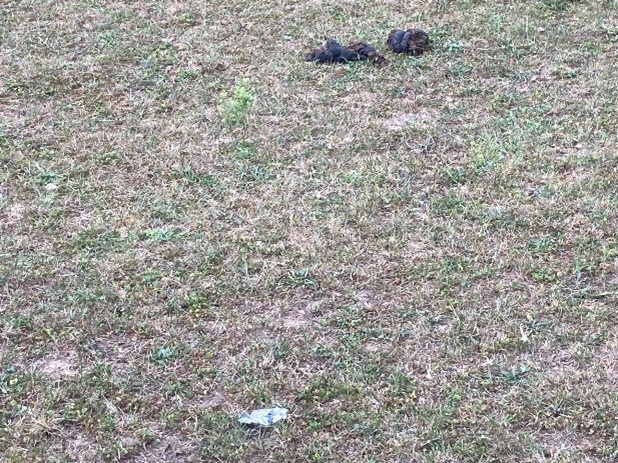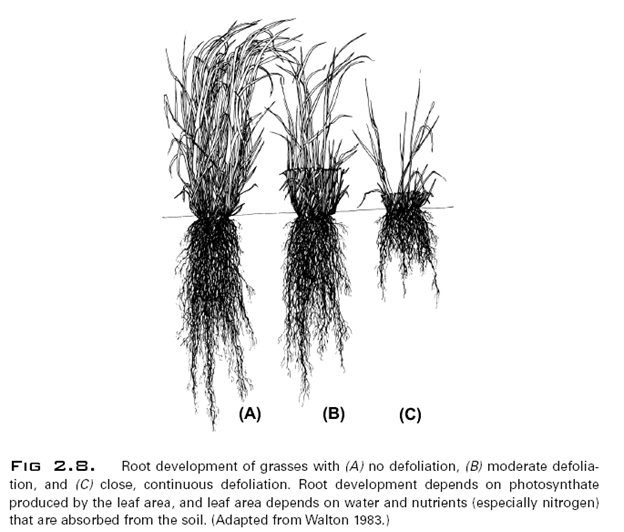What a weather transition has occurred in the last month! Hay harvest, and corn and soybean planting were extended because of rain that seemed to be happening every third to fourth day. In West Lafayette, there was a record low of 37 degrees F early in the week for that date; now we have a string of many days over 90 degrees F without rain projected to happen.

If plants could cry out, they would yell “Stop” when overgrazing begins to occur. Note the visible manure in the upper center and the crushed aluminum can in the lower center of the photograph. If the pasture was properly grazed, the manure and aluminum can would not have been visible at the distance that the photograph was taken. (Picture Credit: Keith Johnson)
Little rain and high temperature are not conducive to good cool-season grass growth. Pastures grazed by livestock, to what appears to be a golf putting green, is not healthy for the forages in the pasture. Grazing height of cool-season grasses to less than 4 inches does not permit the grass to recover by accumulating reserves for root and herbage growth. The pasture should not look like a hayfield that has just been mowed.
You likely were told to clean up all the food on your plate when you were a child sitting at the kitchen or dining room table. That was a good recommendation to reduce food waste and to make sure the dollars earned by your parent or guardian were not “thrown in the trash”.
Consider this – If the soil in the pasture is the plate and the forages growing in the soil is the food on the plate to be eaten, having livestock, analogous to the child at the table, grazing the soil bare of vegetation is a concern. Grazing every grass blade is not the objective with proper grazing management and it should not be like the clean plate after your meal.
The figure that follows is from “Forages Volume 1 – an introduction to grassland agriculture”. This is an excellent illustration of what happens to root biomass and vegetative regrowth when overgrazing occurs and time is not allowed for plant recovery.
If the illustration doesn’t convince you of the negative consequences of overgrazing, the University of Kentucky Forage website time lapse video simulating orchardgrass response differences to intensity of vegetation removal should provide insight. Within the information shown by clicking on the link http://forages.ca.uky.edu/grazing, review the “UK Orchardgrass” box found on the left middle side of the page. Keep the video content in your mind when you leave some residual growth in the pasture. You are doing the right thing!
Information found within the link https://www.extension.purdue.edu/extmedia/ID/ID-528-W.pdf provides a checklist of ideas that should be considered to feed beef cattle during dry weather. While the emphasis is on beef cattle, there are many components of the publication that have value for all livestock species. Review the information in the publication now so a plan can be developed if it needs to be put into action. Doing nothing, is not a wise plan.



